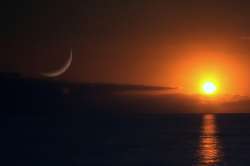Rise in oxygen levels led to explosion of life over 400 million years ago: Study
A recent study has suggested that a spike in levels of oxygen may have caused a three-fold increase in biodiversity during between 445 and 485 million years ago.

A recent study has suggested that a spike in levels of oxygen may have caused a three-fold increase in biodiversity during between 445 and 485 million years ago.
The explosion of diversity, recognised as the Great Ordovician Biodiversification Event, brought about the rise of various marine life, tremendous change across species families and types, as well as changes to the Earth, starting at the bottom of the ocean floors.
"This oxygenation is supported by two approaches that are mostly independent from each other, using different sets of geochemical records and predicting the same amount of oxygenation occurred at roughly the same time as diversification," said Cole Edwards, assistant professor at Washington University in the US.
"We made another link between biodiversification and oxygen levels, but this time during the Ordovician where near-modern levels of oxygen were reached about 455 million years ago," said Edwards.
"It should be stressed that this was probably not the only reason why diversification occurred at that time. It is likely that other changes - such as ocean cooling, increased nutrient supply to the oceans and predation pressures - worked together to allow animal life to diversify for millions of years," he said.
Using geochemical proxies, high-resolution data and chemical signatures preserved in carbonate rocks formed from seawater, researchers were able to identify an oxygen increase during the Middle and Late Ordovician periods.
They found a nearly 80 per cent increase in oxygen levels where oxygen constituted about 14 per cent of the atmosphere during the Darriwilian Stage (Middle Ordovician 460-465 million years ago) and increased to as high as 24 per cent of the atmosphere by the mid-Katian (Late Ordovician 450-455 million years ago).
"This study suggests that atmospheric oxygen levels did not reach and maintain modern levels for millions of years after the Cambrian explosion, which is traditionally viewed as the time when the ocean-atmosphere was oxygenated," Edwards said.
"In this research, we show that the oxygenation of the atmosphere and shallow ocean took millions of years, and only when shallow seas became progressively oxygenated were the major pulses of diversification able to take place," he said.
(With PTI inputs)